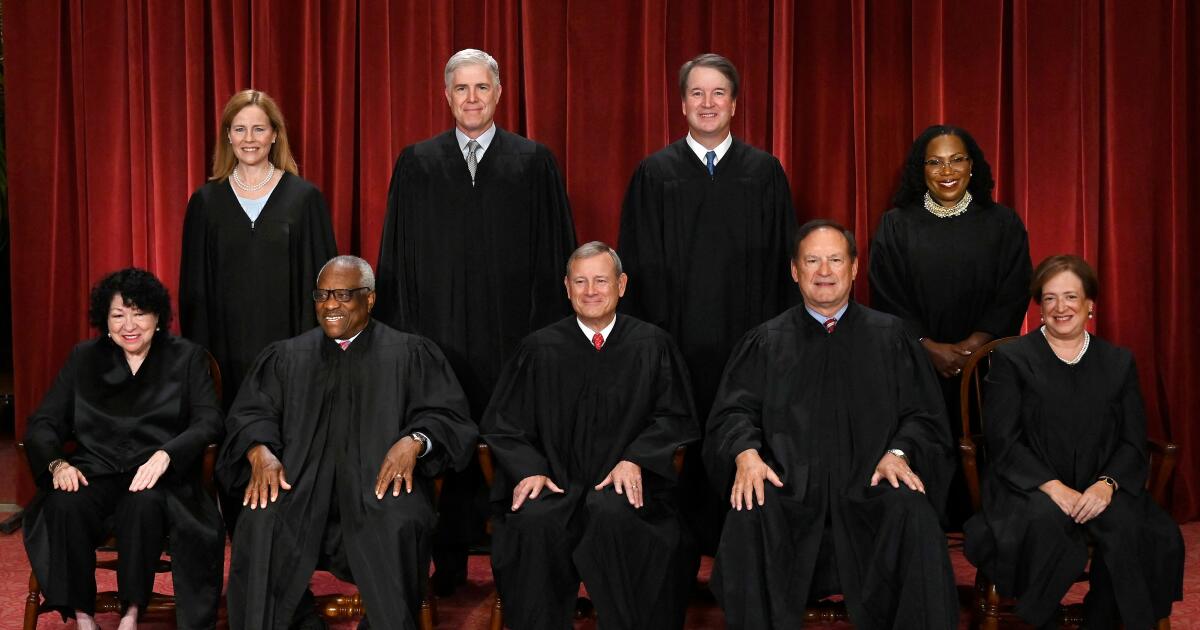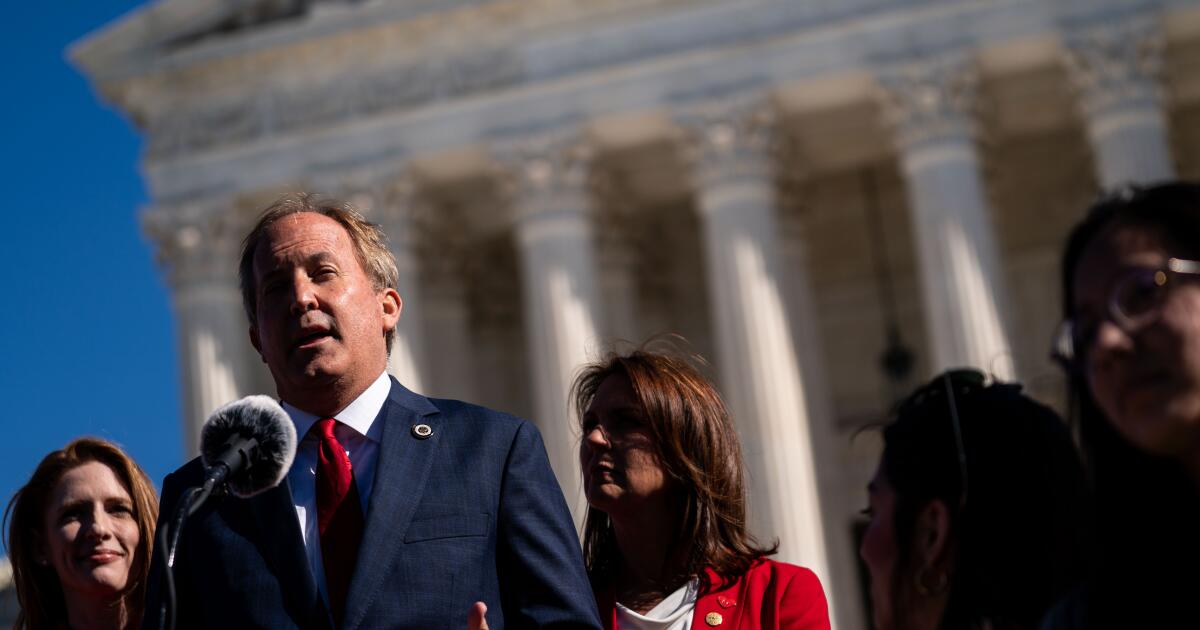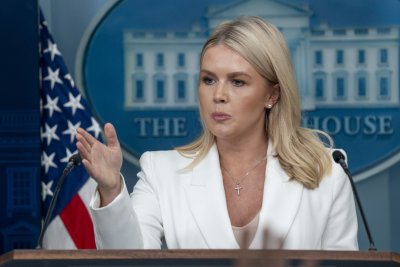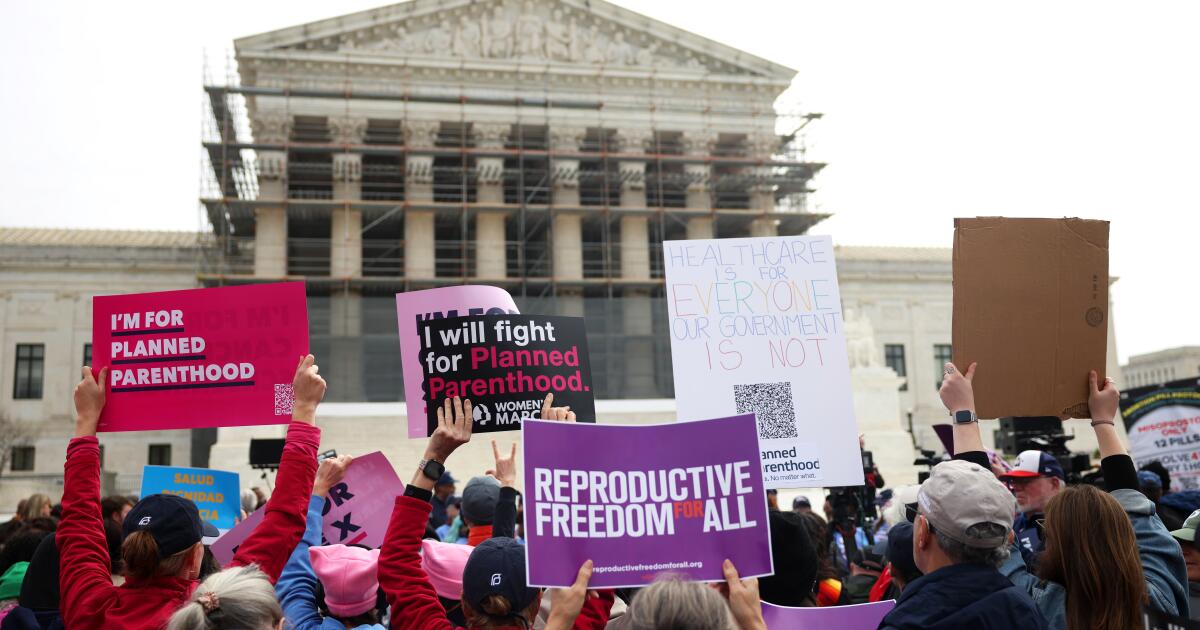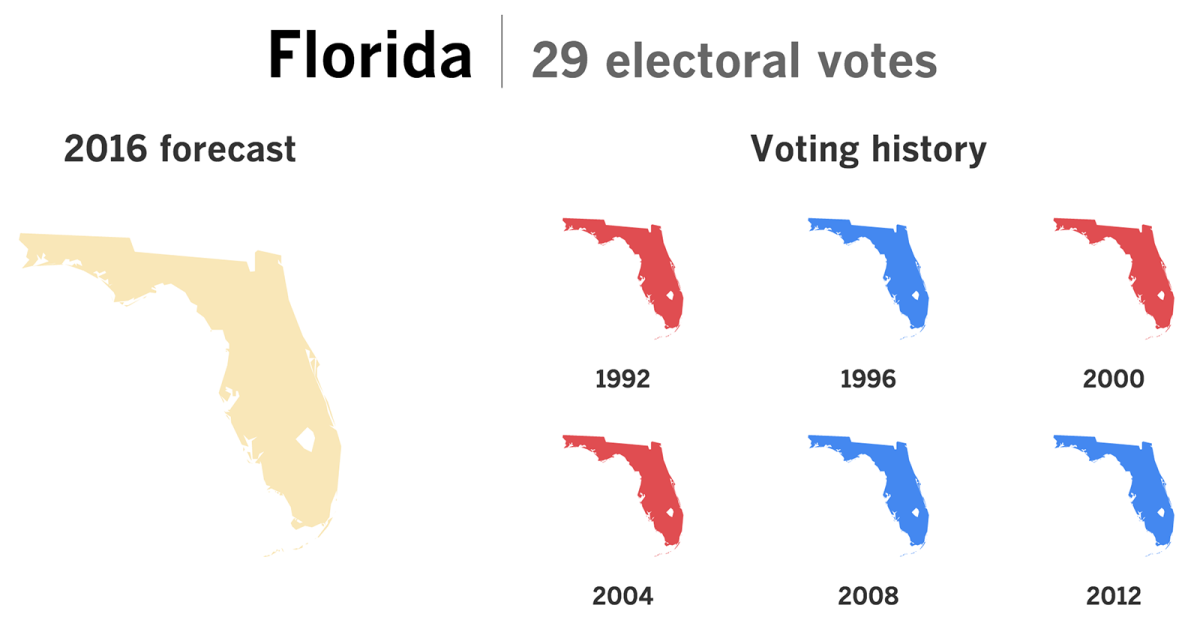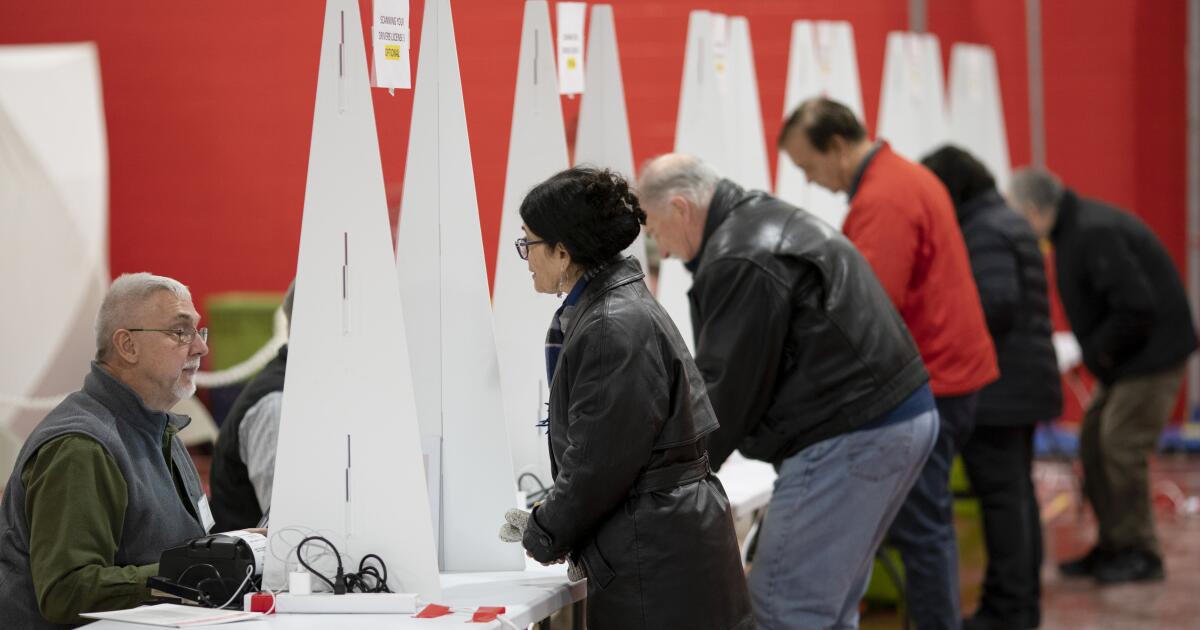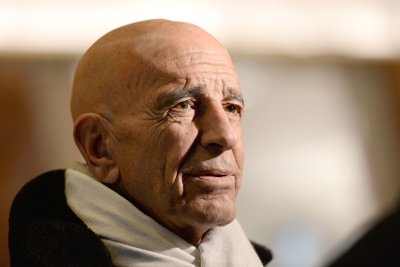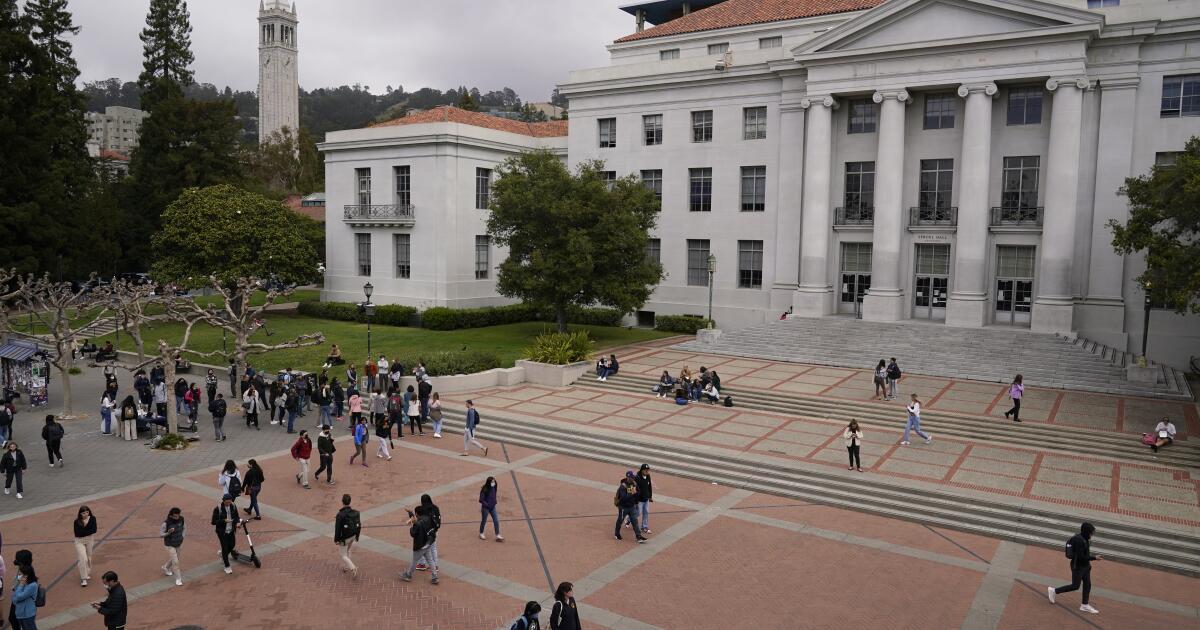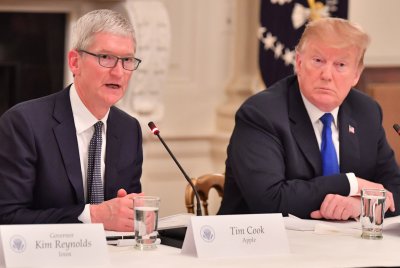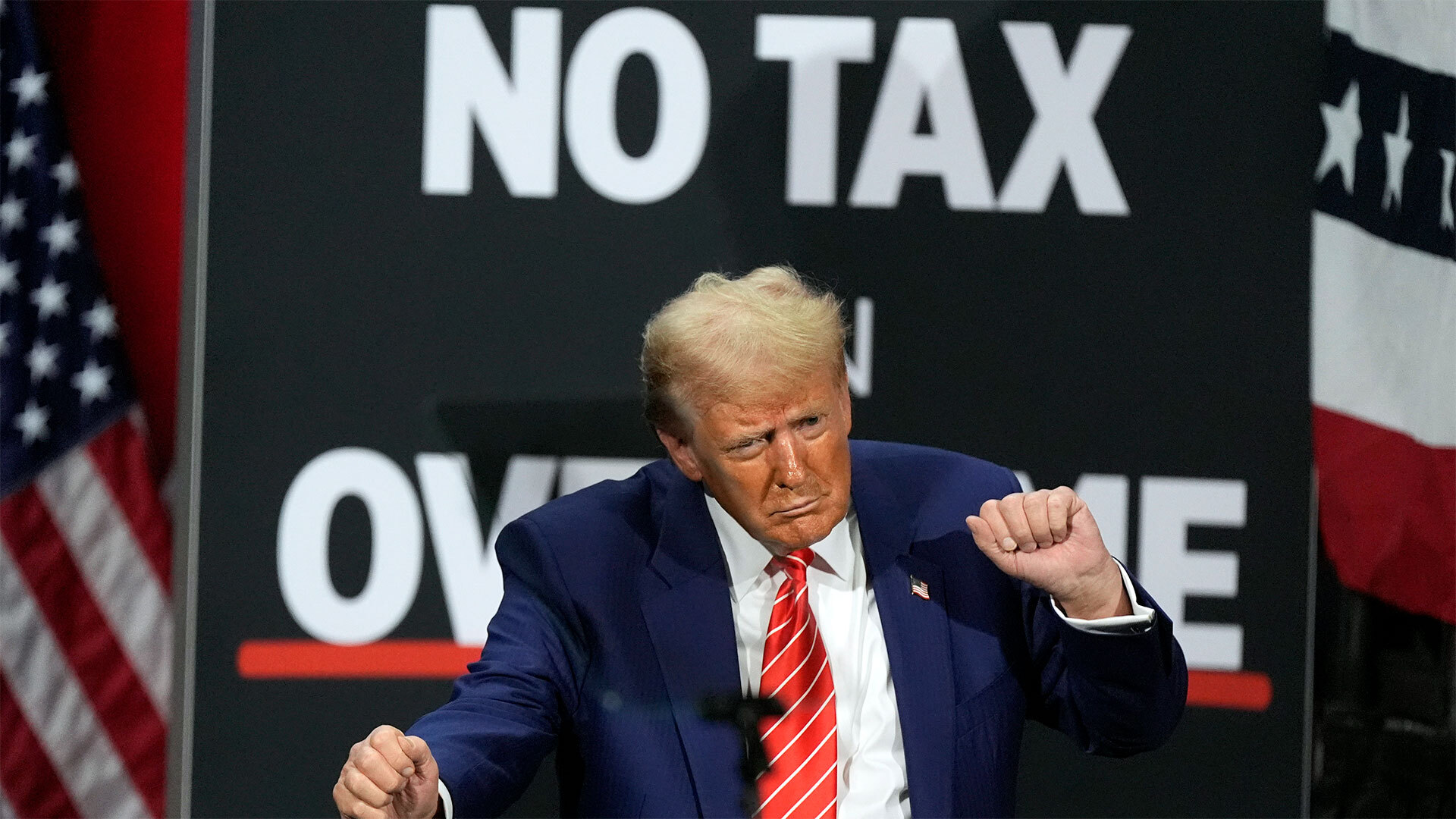At Supreme Court, steady wins for conservative states and Trump’s claims of executive power
WASHINGTON — The Supreme Court term that ended Friday will not be remembered for blockbuster rulings like those recent years that struck down the right to abortion and college affirmative action.
The justices scaled back their docket this year and spent much of their energy focused on deciding fast-track appeals from President Trump. His administration’s lawyers complained too many judges were standing in the way of Trump’s agenda.
On Friday, the court’s conservatives agreed to rein in district judges, a procedural victory for Trump.
What’s been missing so far, however, is a clear ruling on whether the president has abided by the law or overstepped his authority under the U.S. Constitution.
On the final two days of the term, the court’s conservative majority provided big wins for Republican-leaning states, religious parents and Trump.
The justices gave states more authority to prohibit medical treatments for transgender teens, to deny Medicaid funds to Planned Parenthood clinics and to enforce age-verification laws for online porn sites.
Each came with the familiar 6-3 split, with the Republican appointees siding with the GOP-led states, while the Democratic appointees dissented.
These rulings, while significant, were something short of nationwide landmark decisions — celebrated victories for the Republican half of the nation but having no direct or immediate effect on Democratic-led states.
California lawmakers are not likely to pass measures to restrict gender-affirming care or to prohibit women on Medicaid from obtaining birth control, pregnancy testing or medical screenings at a Planned Parenthood clinic.
The new decisions echoed the Dobbs ruling three years ago that struck down Roe vs. Wade and the constitutional right to abortion.
As the conservative justices noted, the decision in Dobbs vs. Jackson Women’s Health did not outlaw abortion nationwide. However, it did allow conservative states to do so. Since then, 17 Republican-led states in the South and Midwest have adopted new laws to prohibit most or all abortions.
On this front, the court’s decisions reflect a “federalism,” or states-rights style of conservatism, that was dominant in decades past under President Reagan and two of the court’s conservative leaders, Chief Justice William Rehnquist and Justice Sandra Day O’Connor.
Both were Arizona Republicans (and in O’Connor’s case, a former state legislator) who came to the court with that view that Washington holds too much power and wields too much control over states and local governments.
With the nation sharply divided along partisan lines, today’s conservative court could be praised or defended for freeing states to make different choices on the “culture wars.”
The other big winner so far this year has been Trump and his broad claims of executive power.
Since returning to the White House in January, Trump has asserted he has total authority to run federal agencies, cut their spending and fire most of their employees, all without the approval of Congress, which created and funded the agencies.
He has also claimed the authority to impose tariffs of any amount on any country and also change his mind a few days later.
He has dispatched National Guard troops and Marines to Los Angeles against the wishes of the governor and the mayor.
He has asserted he can punish universities and law firms.
He has claimed he can revise by executive order the 14th Amendment and its birthright citizenship clause.
So far, the Supreme Court has not ruled squarely on Trump’s broad assertions of power. But the justices have granted a series of emergency appeals from Trump’s lawyers and set aside lower court orders that blocked his initiatives from taking effect.
The theme has been that judges are out of line, not the president.
Friday’s ruling limiting nationwide injunctions set out that view in a 26-page opinion. The conservatives agreed that some judges have overstepped their authority by ruling broadly based on a single lawsuit.
The justices have yet to rule on whether the president has overstepped his power.
Justice Amy Coney Barrett summed up the dispute in a revealing comment responding to a dissent from Justice Ketanji Brown Jackson. “Justice Jackson decries an imperial Executive while embracing an imperial Judiciary,” she wrote.
Missing from all this is the earlier strain of conservatism that opposed concentrated power in Washington — and in this instance, in one person.
Last year offered a hint of what was to come. A year ago, the court ended its term by declaring the president is immune from being prosecuted for his official acts while in the White House.
That decision, in Trump vs. United States, shielded the former and soon-to-be president from the criminal law.
The Constitution does not mention any such immunity for ex-presidents charged with crimes, but Chief Justice John G. Roberts Jr. said a shield of immunity was necessary to “enable the the President to carry out his constitutional duties without undue caution.”
Since returning to the White House, Trump has not been accused of exercising “undue caution.”
Instead, he appears to have viewed the court’s opinion as confirming his unchecked power as the nation’s chief executive. Trump advisors say that because the president was elected, he has a mandate and the authority to put his priorities and policies into effect.
But the Supreme Court’s conservatives did not take that view when President Biden took office promising to take action on climate change and to reduce the burden of student loan debt.
In both areas, the Roberts court ruled that the Biden administration had exceeded its authority under the laws passed by Congress.
Away from Washington, the most significant decision from this term may be Friday’s ruling empowering parents.
The six justices on the right ruled parents have a right to remove their children from certain public school classes that offend their religious beliefs. They objected to new storybooks and lessons for young children with LGBTQ+ themes.
In recent years, the court, led by Roberts, has championed the “free exercise” of religion that is protected by the 1st Amendment. In a series of decisions, the court has exempted Catholic schools and charities from laws or regulations on, for example, providing contraceptives to employees.
Friday’s ruling in a Maryland case extended that religious liberty right into the schools and ruled for Muslim and Catholic parents who objected to new LGBTQ+-themed storybooks.
At first, the school board said parents could have their young children “opt out” of those classes. But when too many parents took the offer, the school board rescinded it.
The clash between progressive educators and conservative parents reached the court when the Becket Fund for Religious Liberty appealed on behalf of the parents.
Justice Samuel A. Alito Jr. said the parents believed the books and stories offended their religious beliefs, and he ordered school authorities to “to notify them in advance whenever one of the books in question is to be used … and allow them to have their children excused from that instruction.”
This decision may have a broader impact than any from this term because it empowers parents nationwide. But it too has limits. It does not require the schools to change their curriculum and their lessons or remove any books from the shelves.
The conservatives fell one vote short in a case that could have brought about a far-reaching change in American schools. Split 4 to 4, the justices could not rule to uphold the nation’s first publicly funded, church-run charter school.
In the past, Roberts had voted to allow students to use state tuition grants in religious schools, but he appeared uncertain about using tax money to operate a church-run school.
But that question is almost certain to return to the court. Barrett stepped aside from the Oklahoma case heard in April because friends and former colleagues at the Notre Dame Law School had filed the appeal. But in a future case, she could participate and cast a deciding vote.
